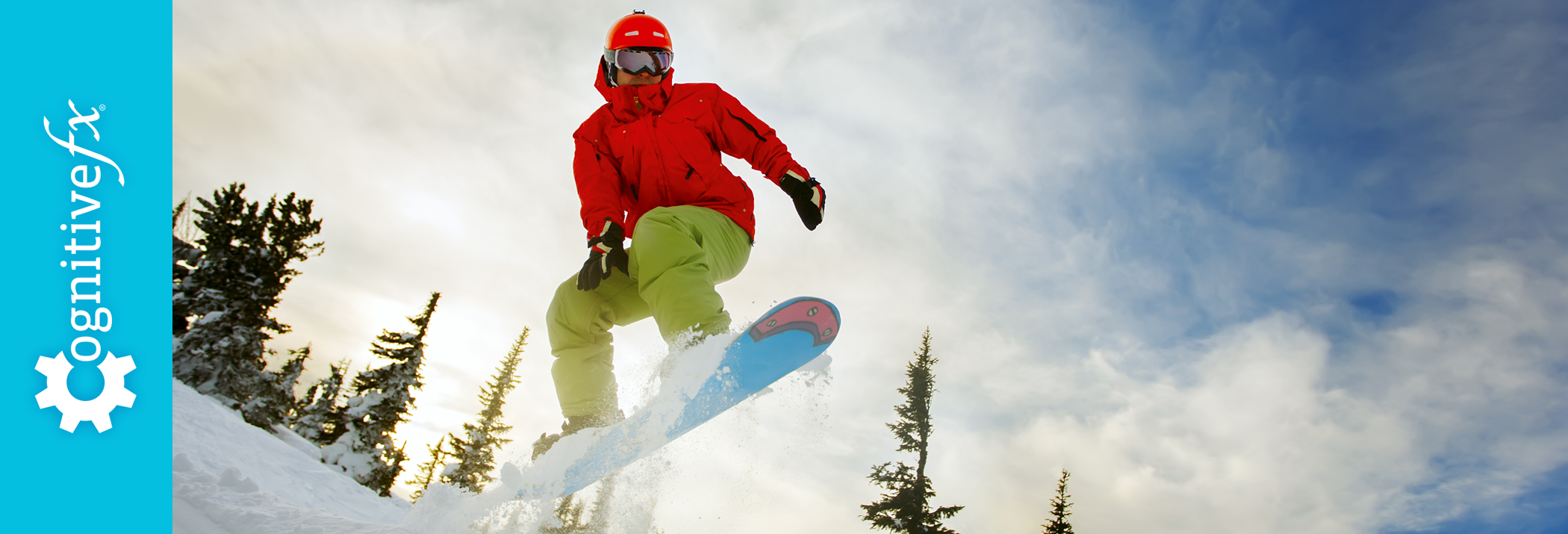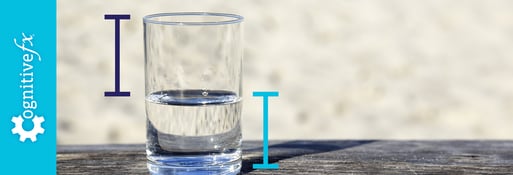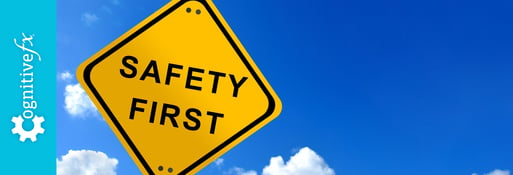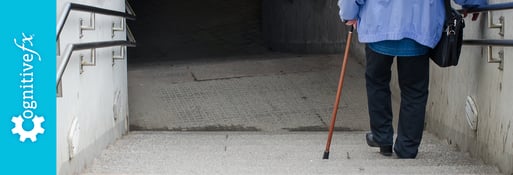Did you know that concussions are among of the top injuries sustained while skiing and snowboarding? Beginners and professionals alike need to be equipped with the tools to stay safe on the slopes.
Here are some great safety tips to protect your head:
- Wear a helmet: Choose one that fits properly, with the strap secured snugly under the chin. Helmets can greatly reduce the severity of head injuries, and save lives. Our brains are surrounded by a fluid called cerebrospinal fluid. The hard outer shell and soft lining of a helmet add additional layers of important protection to the cranium. Helmets don’t guarantee protection, but they have been proven to greatly reduce the risk of a Traumatic Brain Injury (TBI).
- Be mindful of your surroundings: Make sure your environment is safe by constantly scanning your peripherals and being alert for potential dangers. Other skiers, children, trees, hard packed ice, avalanche zones, rocks, cliff edges, and other terrain hazards are all good to look out for. Often times, dangers are marked by the ski patrol with a sign, or boundary tape. Being sharp, and alert is important as things can change quickly. Respect your own skill level, and abilities.
Many ski-related head injuries occur with tree collisions. If you want to learn to ride through the trees, go slow. Ride around one or two trees, and get the feel for it. There is much less space to turn, and maneuver in the trees, so it's vital to slow down and use your best judgment. Hidden branches, rocks, and roots under trees can quickly ruin your day. Deep powder can conceal these dangers.
- Give yourself space: Allow safe proximity (at least 10 feet) to potential hazards and others. Give extra space to children & beginners. If you can’t tell if someone is a beginner err on the side of caution. Being mindful of your speed, and being intentional about your chosen path is important. Collisions often happen when a sudden change of mind occurs.
- Learn to stop quickly: This vital skill will keep you and others safe.
- Know how to fall properly: If you know you're going to fall, bend your knees & stay low. It's best to minimize the distance to fall. If you're falling forward, instead of using your wrists, use your whole forearms to take the impact. If falling backward, fall back with your body slightly turned to the side so your body takes the impact with arms close to the body. Practice on a mild decline like a bunny hill.
At Cognitive FX we understand the effects of a concussion can be life-changing, persistent symptoms can greatly impact one’s quality of life. We encourage everyone to have fun, but be safe and mindful to others and yourself while on the snow!






